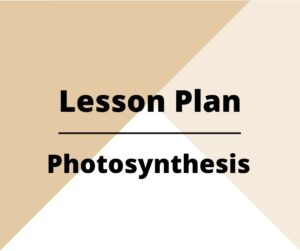The lesson plan is a very important tool for teaching. Today we are going to discuss the lesson plan on Metals and Non-Metals
Lesson plan on Metals and Non-Metals
| Name of the Teacher: XX Roll No: 00 Class: X The average age of the students: 15 + years | Subject: Physical Science Lesson Whole: Metals, Non-Metals and Metallurgy Lesson Unit: Metals and Non-Metals Duration: 40 Minutes Date: DD/MM/YY |
General Aims
- To create interest in the students to study the subject Physical Science
- To develop a scientific attitude among the students
Specific Objective
- To enable the students to learn about the physical properties of Metals and Non-Metals
- To enable the students to distinguish between metal and non-metal
Teaching Aids
Blackboard, chalk, duster, chart, model and pointer
Step-I Preparation
Motivation: In order to motivate the students the following questions will be asked
| Questions | Expected Answer |
| Who cooks food for you at home? | Our mother cooks food for us at home |
| What kinds of utensils or materials your mother uses during cooking? | Our Mother uses a pan, cooker, container and plates during cooking |
| Cookers, plates, and containers are all made up of which materials? | The cooker is made up of aluminium and plates are made up of steel, plastic and glass etc |
| What the steel, or aluminium called in scientific language? | I don’t know sir |
Announcement
So class, today we are going to learn about Metals and Non-Metals
Step-II Presentation
| Teaching Points | Instructional Objectives | Teaching Methods | Teacher’s activity/ Discussion | Blackboard work | Testing-Learning outcomes | Learning Outcomes |
| 1. Introduction to Metals and Non-Metals | Students are able to recall Metals and Non-Metals | Lecture Method | Metals and Non-Metals are different types of materials present around us. Elements can be divided into metals and non-metals and it’s important to know whether a particular element is a metal or non-metal. Metals (like copper and aluminium) are good conductors of electricity and heat. Non-Metals such as phosphorus and sulfur) are insulators | -Metals are good conductors of heat and Electricity eg. copper, aluminium -Non-Metals are insulators eg. phosphorus, sulfur etc | 1. What are metals and Non-Metals? | Students are able to define the metals and non-metals with examples |
| 2. Properties of Metals (Physical) | Students are able to understand the physical properties of Metals | Lecture cum Demonstration Method | The physical properties of Metals are: 1. Physical State: Metals are generally solids at room temperature. They have very high melting and boiling points. Mercury and gallium are exceptions as they are liquid at room temperature 2. Hardness: Metals are generally hard. However, Metals like sodium, and potassium are soft and can be cut with knife. Similarly, metals like gold and aluminium are not very hard 3. Lustre: When metals are freshly cut they have a brilliant shine over the cut surface. This metallic shine is called lustre. Thus metals can be highly polished 4. Density: Metals generally have a high density. Sodium and potassium metals are exceptions as their density is less than 1 g cm-3 5. Melting point and Boiling point: Metals generally have a higher melting point and boiling point. Sodium and potassium metals are exceptions as they have low melting and boiling point. 6. Malleability and Ductility: The property by which metals can be beaten into a thin shine sheet with a hammer without breaking and ductility is the property by which metals can be drawn into thin wire. for example, Gold is the most malleable metal and silver is the most ductile metal. 7. Thermal and Electrical conductivity: Metals are good conductors of heat and electricity. The best conductor of electricity and heat is mercury and lead. | Physical State: Solid at room temperature except which is liquid Hardness: Generally metals are hard except alkali metals like sodium and potassium Lustre: All metals have a metallic lustre Density: Metals are high density except for alkali metals which are low density -Tungsten is the highest melting and boiling point. Malleability and ductility: Metals can be beaten into thin sheets. The most malleable metal is gold and the most ductile metal is silver. -Silver is the best conductor of heat and electricity -Mercury and lead has the poorest conductor of heat and electricity | 2. Name the liquid metal 3. which metals are soft 4. what is meant by metallic lustre 5. Which are the densest and highest metals? 6. What are Malleability and Ductility? | understanding: Students are able to understand the properties of metals and identify them according to their properties Application: Students are able to apply the knowledge and make use of it according to their needs in daily life. |
| 3. Physical properties of Non-Metal | Students are able to understand the physical properties of Non-Metals | Lecture-cum-Demonstration method | 1. Physical state: Non-Metals are generally brittle solid or liquid or gaseous. They change into a vapour state at fairly low temperatures. However, Carbon, silicon and boron are exceptions to the rule and change into vapours at very high temperatures. 2. Hardness: Non-Metals are generally not hard. However diamond is the hardest naturally occurring substance. 3. Lustre: Non-Metals have no lustre. However, Iodine and graphite have lustre. 4. Density: Non-Metals generally have low density however, diamonds are almost as heavy as aluminium. 5. Melting point and Boiling Point: Non-Metals have low melting and boiling points. However, Carbon, Silicon and boron have high melting and boiling points. 6. Malleability and Ductility: Non-Metals are non-malleable, if hammered they form powdery and Non-Metals are not ductile. Carbon fibre(a recently developed allotrope of carbon) is highly ductile 7. Conductivity: Non-Metals are generally bad conductors of electricity. However, graphite is a good conductor of electricity | -Non-Metals are generally brittle solid, liquid or Gas – They are not very hard -Non-Metals have no lustre Non-Metals have low density -Non-Metals have low melting and boiling point -Non-Metals are non-malleable and not ductile -Non-Metals are generally insulators. Graphite is a good conductor of electricity. | 7. Name two non-metals which vapour at high temperature 8. Give one example of non-metal that is the hardest substance 9. Give one example of non-metals that have lustre 10. Name the heaviest non-metal 11. Name non-Metals that exist in a liquid form at room temperature 12. Name the allotrope of non-Metal which is ductile 13. Name one non-metal which is a good conductor of electricity. | Understand: Students are able to understand the physical properties of non-metals and identify them according to their properties. Skills: Students are able to collect various metals and non-metals and demonstrate them according to their properties and also distinguish them between Metals and non-Metals. |
Step-III Recapitulation
In order to test the pupil’s understanding of the lesson just taught, the following question will be asked
- Give two examples of metals which float on the surface of the water?
- Why the Titanium and Chromium classified as strategic metals
- Give two examples of non-metals that have lustre
- Name one non-metal and one metal that is in a liquid state at room temperature
- Why is tungsten metal selected for making filaments of incandescent lamp bulbs?
Step-IV Remedial Teaching
Remedial teaching will be done if found necessary
Step-V Home Assignment
The following questions will be given for homework
- Mention five points of difference between metals and Non-Metals
- State three reasons for counting sulphur amongst non-metals
- Why are Stainless Steel cooking pans often given a copper outer bottom?
Conclusion: Well class, Today we have learned about “Metals and Non-Metals”. In the next class, we will learn about “Formation of ionic compounds”



